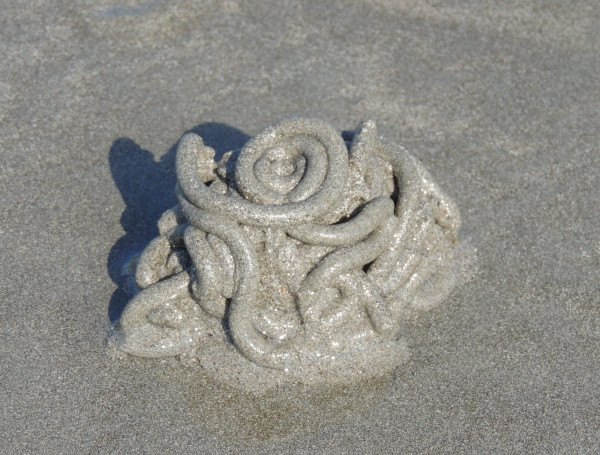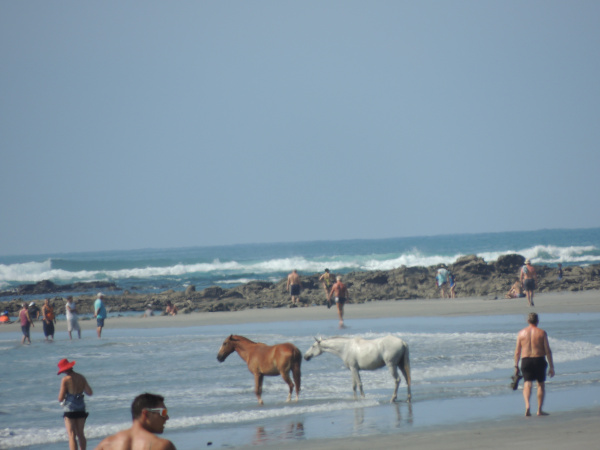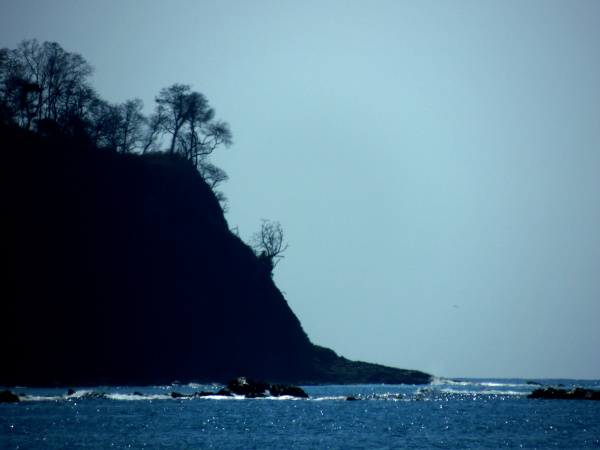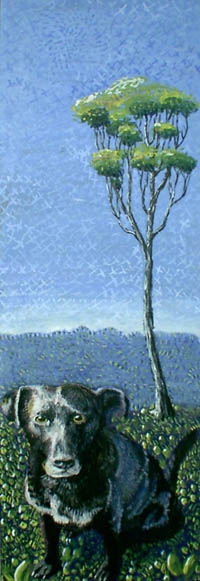|
|
|
the demand for auto repair on the Nicoya Peninsula
Sunday, February 17 2019
location: Hotel Samara Tree House Inn, Samara, Nicoya Peninsula, Costa Rica
I was up early, as I always am, and proceeded to set myself up in a plastic "Adirondack" chair beside the pool, only a few feet from the door of our imperfect little room. There I could watch my stupid YouTube videos in peace (I've gone back to mostly watching retrocomputing material). In the places I've used it (with the exception of Pizza Tree), the WiFi in Costa Rica has been better than it has been in any of the many other countries I've visited. Eventually I figured out that the big coffee urn on the circular registration desk actually was full of coffee and nobody was going to try to have a conversation with me if I helped myself, so I did. The coffee was drinkable but not great, so I drank several cups of it.
Eventually, though, I started being overwhelmed by the smell of chemicals. One of the employees was wearing cologne, and it was making the entire poolside area smell like him. And if it wasn't him, it was some soap being used by one of the cleaning crew. I don't think there was anything special about that soap, it's just that once you've built your life around all-natural products (many of which contain no added fragrances) you develop a sensitivity to the olfactory overkill of most consumer cleaning products. This is similar to how I've come to find many foods cloyingly sweet and can smell a cigarette a half mile away. It's likely that if I'd been working to cut sodium out of my diet, most of the food I currently eat would taste like the Dead Sea. I don't know that I'd want to go back to the olfactory blindness of, say, me in the 1980s, but it would've been nice to not know the exact spot on my coffee cup that had been touched by hands that don't belong to me.
After Gretchen woke up, it was nearly 8:30am, which was the time that Luv Burger was scheduled to open, and their breakfast menu looked exciting. By this point we'd decided that there was no reason to eat anywhere else while in Samara. First, though, we walked out to the ocean, which was in the process of receding with the tide. There were lots of little mounds of extruded sand from some organism beneath the sand that was apparently processing it (probably lugworms; the piles resembled fossil worm castings). There were also plenty of overlain patterns etched into the sand that had accumulated over time as the waves from the falling surf failed to reach up and erase them. The most interesting of these were little "landscapes" "painted" by the water in the sand as it tried to find its way to the ocean. The water formed tiny rivers that converged into larger rivers, making tree-like drainage patterns that, when cropped, looked very much like a painting of trees in a forest, complete with the ghosts of other smaller trees receding into what looked like three-dimensional distance receding into a horizon glowing with some sort of white pigment (perhaps salt).
Luv Burger has its own set of fancy shaded chaise lounges on the beach. It's prime real estate, and it is apparently guarded jealously by the Luv Burger staff. They probably have a lot of problems with people who aren't particularly interested in vegan food thinking they can settle into those chaise lounges for the day. For us, though, the vegan food was a feature, not a bug. Gretchen ordered us cappuccinos, gallo pinto, avocado toast (for me) and some sort of oatmeal (for her). I've heard that avocado toast is something that millennials are blowing their money on and that is why they can only afford to buy tiny houses, but I'd never actually had any. When it arrived, I found it a bit bland, though in a comfort-food kind of way. Hot sauce (and Luv Burger provides some good stuff with the gallo pinto) helped. I wasn't a big fan of the cinnamon Luv Burger reflexively adds to the cappuccinos, but Gretchen loved it. It wasn't long before Gretchen struck up a conversation with the youngish woman on the chaise lounge next to her. She admitted she wasn't vegan and was only eating at Luv Burger because the place she was staying was providing food via a subcontracting arrangement with Luv Burger. But the quality of the food had her thinking maybe a vegan diet wasn't a terrible thing. (Gretchen's hook had, embarrassingly, been to ask her if I, Gretchen's husband, didn't look good for being 51 years old.) Gretchen proceeded to crank up the vegan evangelism, going on to exploit a Jewish angle when she discovered the woman was a recent convert to Judaism and that her husband was studying to be a rabbi. Meanwhile I scanned the horizon for photographic opportunities. I was delighted to see a couple horses with no apparent human accompaniment frolicking in the surf. One of them actually lay down and let the water splash against him/her. It seems delighting in the ocean is a mammalian universal.
Periodically we too would venture out to the ocean to feel some of that lukewarm water splash over our body. There were a couple surfers out there too, catching the occasional wave. But the waves in the Bay of Samara aren't all that impressive, tucked as it is behind a chain of rocky islands.
After blowing a few hours at Luv Burger, Gretchen and I returned to the Tree House Inn and took advantage of their pool, which we hadn't seen anyone but the grackles and doves using. It's not a large pool, but it was a lot better than it looked, and we stayed in it a long time.
We had to check out of our room at noon, but the Tree House Inn allowed us to remain parked in our tight little spot while we went off to make a cursory stroll around town, which amazed us with all the advertised vegan dining options. But we only really had one destination in mind: Luv Burger, where we would have our last meal in Samara: lunch. This time I got the Cocobacon burger, which features "coconut bacon," little chips of coconut smoked and otherwise prepared so that they taste like actual bacon. I didn't think I'd like it, but it was amazing, at least in the context of the burger. I also had a nice glass of white wine. Periodically guys would come along the beach trying to sell us stuff. Yesterday it had been little bits of palm frond tied up to look like grasshoppers and garishly-colored loosely-knit blankets. Today some guy was selling bowls.
As we were preparing to hit the long dusty road back to Montezuma, I noticed the passenger-side front tire of our Suzuki SUV looked a bit low. Had it always been like that? So as Gretchen was driving us out of town, we were on the lookout for a gas station. That's the way things work in the United States; there's always a gas station on the road as you're leaving town. But that's not how things work in Costa Rica. If a town has a gas station at all, you have to know where it is and seek it out as an explicit errand. Failing to do that, we never saw Samara's gas station (Google Maps says it has one well out of town on the road going north). And the next town east, Puerto Carillo, has no gas station at all. Indeed, the only gas station anywhere near our route was the one back in Cobano, which happens to be the closest gas station to Montezuma. After leaving the asphalt highway, the pounding of the washboarded surface and occasional large rocks had us both concerned about the state of that tire.
Our route back east was a little different from the one we'd taken from Playa San Miguel to Samara. This time we more closely hugged the Pacific shoreline, though at times this meant we were driving on narrow ledge chiseled into a cliff high above the churning surf. At a wide spot on one such ledge, we got out to piss and had another look at that tire. It was looking worse than I'd remembered it being and I was having my doubts we'd make it all the way back to Montezuma without resorting to the spare. But if we could just get some more air in that tire, we could probably make it even if it did have a slow leak.
I asked Gretchen if she ever bothers to check the tires of any car she ever drives and she said that she didn't. And even for me it's probably true that if I check a car's tires, it's mostly subconsciously. But I have so much experience with vehicles of dubious reliability that checking tires is a habit I definitely have/
As we descended down into a valley with a population and even the occasional business (hell, we passed an actual airstrip north of Playa Corozalito), we thought surely someone must have a way to get air into our tire.
In the dusty crossroads of Pueblo Nuevo, we saw what looked like an auto repair place next to a bar (Bar La Conga) where we could see signs of life. So we pulled to a stop and Gretchen went in to ask if anyone knew of any way we could put air in our tire, which was, she explained in improvised Spanish, going flat. Somehow luck was on our side, and there just happened to be a young man at the bar who had his own garage nearby. He wasn't intending to work today, but if we'd drive him to his garage, he could put air in our tire. His garage (9.831911N, 85.326479W) was a little over a half-kilometer away across a bridge. He quickly pumped air into the tire and then, using a hand tool, removed the lug nuts. This surprised Gretchen, who thought perhaps he was doing more than we needed. But no, he wanted to check the tire for leaks. He took it over to a place where a mixture of soap and water had already been prepared. He then poured it over the treads, turning the tire slowly and looking for bubbles (this is also how leaks are detected in gas lines). Sure enough, he found one. It wasn't leaking quickly, but it needed to be stopped. There didn't appear to be anything stuck in the tire, so all it needed was a simple plug (a fix I myself have done when properly equipped). And just like that, our tire was fixed. Initially the guy refused payment, but Gretchen insisted he take the 10,000 colones note (worth about $16) she handed him so he could have beers with his friends. It has been a good experience all around: the mechanic had easily been able to save our bacon (and doing so is always a joy, unless perhaps your name is Donald J. Trump), and we'd averted a disaster. As we continued on our way, Gretchen remarked that the whole experience had been a positive and that she was glad we'd gone through it. Being more anxious than Gretchen by nature, I wasn't sure I agreed, but with it behind us I agreed it had been an uplifting experience.
The tire repair had happened only three or so road-miles from Pizza Tree and by now, I was doing the driving. Initially the road wasn't all that bad, and I could go as fast as 60 km/hr on the straight stretches. But somewhere around the place where the reforestation begins in the center of the peninsula, the road turned terrible and stayed that way for about an hour of driving. This is the stretch of road with the four river fords. Amazingly, though, along with the occasional cattle truck, bus, and collectivo, we saw the occasional battered passenger car (something like a Toyota Camry). Gretchen wondered how driving such a vehicle on this road was even possible, particularly given how full of people (and thus how low on its suspension) the car was. But perhaps the car's suspension had been beefed up; that would be a pretty obvious upgrade in this region, and anyone with the skills to perform it would run a thriving business. Also, having so many people crammed in a car can come in handy on the occasions when the car bottoms out on a rock. The people aren't just ballast that can be removed, they're also helping hands to push and even lift. All that being said, any vehicle driving on the roads through the Nicoya Peninsula are in the process of being destroyed, and they're aren't being destroyed slowly. There are probably lots of auto repair places in the tiny Nicoya villages we were driving through.
The worst roads of all, though, are the paved ones leading into Cobano. I was very happy it was late afternoon and not nightfall when we arrived there. Before proceeding on to Agua Vista, Gretchen pulled a bunch more money out of a cash machine so she could pay Andy (her language tutor) a handsome tip.
Back at Casa Trogon, we set up our little computer lab on the picnic table and picked up where we'd left off. At some point I heated up and ate the leftover yucca fries from last night. They were much better than reheated french fries would've been.

A painting of a forest made entirely by the outgoing surf. Click to enlarge.

Lugworm castings on Playa Samara at low tide.

Horses playing on Playa Samara, photographed from Luv Burger. Click to enlarge.

The guy who fixed our tire, with our rental Suzkuki. Click to enlarge.

The east end of the Bay of Samara, photographed from Luv Burger. Click to enlarge.

This tree somewhere west of Cobano reminded me of the tree depicted in my best painting of
Sally the Dog:

For linking purposes this article's URL is:
http://asecular.com/blog.php?190217 feedback
previous | next |






